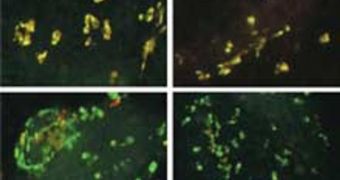Diabetes is one of the most widespread diseases in the world, and one that can lead to a large number of complications, including conditions of the heart, obesity, blindness, diabetic ulcers and even death. Therefore, finding a cure for it is one of the main goals of medicine today. Experts from the Harvard University have recently taken a major step forward in this line of research, when they have announced that they developed a way of modeling the disease in the laboratory using reprogrammed adult cells.
Employing these stem cells could offer experts a better insight into how the disease appears and develops, which would increase their chances of finding its weak spot and exploiting it. In a study published in today's issue of the respected journal Proceedings of the National Academy of Sciences (PNAS), the investigators, led by Harvard Professor of Natural Sciences Douglas Melton, announce that they have managed to create induced pluripotent stem (iPS) cells from adult cells collected from patients with type I diabetes, Technology Review reports.
“What you get is the ability to watch, for the first time, type 1 diabetes develop. Until you watch a disease develop, you will not understand the mechanism, and you therefore cannot devise any kind of sensible treatment or cure,” Melton, the senior author of the study and also the co-director of the Harvard Stem Cell Institute, adds. The new iPS cells can be coerced into differentiating to make insulin-producing pancreatic beta cells, which are among the main targets of type I diabetes. The action of the disease on them could then be observed and analyzed in controlled lab conditions.
“It's completely mind boggling that you can actually study human disease in a dish.” Jeanne Loring, the founding director of the Center for Regenerative Medicine at the Scripps Research Institute, in La Jolla, California, who has not been involved in the new study, says. The fact that the original cells come from a patient assure the experts that the risk of the condition is there, and that the effects they are about to witness come from a solid, genetic origin. “By capturing the flawed cells and probing their dysfunction, researchers could begin to forge such an understanding,” she shares.

 14 DAY TRIAL //
14 DAY TRIAL //